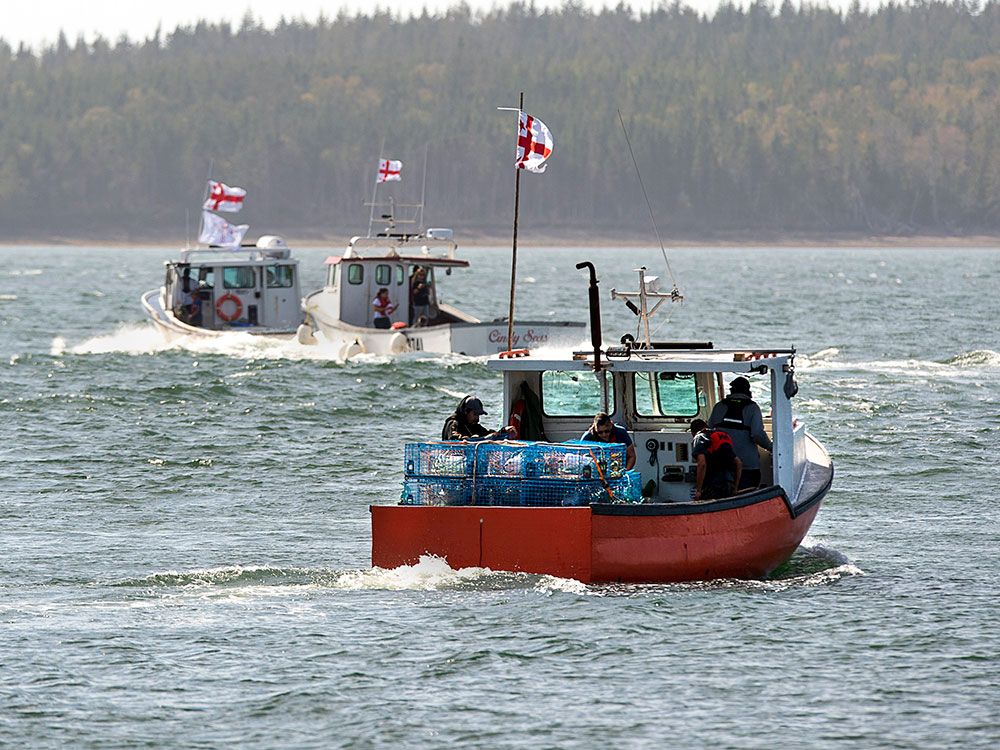wildmanyeah
Crew Member
[212] I will begin by describing the judge’s conclusions with respect to each of the species.
[213] There is both a commercial and a recreational fishery for chinook. The species has been under a great deal of pressure, and, under the Pacific Salmon Treaty, Canada has agreed to reduce the fishery for conservation purposes.
[214] For regulatory purposes, chinook can be divided into the ocean-based stock, which is a mixed population, and the stock that has returned to a specific river to spawn. The ocean-based stock is managed under a system known as Aggregate Abundance Based Management (“AABM”). The stocks of fish that have returned to specific rivers on the West Coast of Vancouver Island to spawn are managed under a system known as Individual Stock Based Management (“ISBM”). For practical purposes, AABM applies to most of the plaintiffs’ commercial fishing, while ISBM applies to specific terminal fisheries in which the plaintiffs engage.
[215] The judge found that, for the most part, the regulatory system, including the allocation of quota to the plaintiff, was justified for conservation purposes. She did, however, find that certain specific policies violated the plaintiffs’ rights.
[216] At the time of the trial, the recreational fishery for chinook was given priority over the commercial fishery. The commercial fishery allocation was subject to a 20% holdback until August 31 each year in order to allow for a downward adjustment in the event that the recreational harvest exceeded expectations. As well, commercial fishing could not take place within five miles of the shore until September 15 each year, in order to allow chinook to have a migration corridor. Recreational fishers were allowed to fish in the area between one and five miles of the shore.
[217] The judge found that the priority given to recreational fishing over the plaintiffs’ rights was unjustified. Particularly given the traditional importance of chinook to the Nuu‑Chah‑Nulth, their commercial fishing allocation could not be given a lower priority than the recreational fishery.
[218] The judge also found that the plaintiffs’ small vessel fleet should be allowed in the one-to-five mile corridor at times when recreational fishers have that right. She did not, however, make the same ruling with respect to the plaintiffs’ trollers.
[219] With respect to the terminal chinook fishery, the judge also found that the priority given to recreational fishers was not justified.
[220] The judge found that Canada could not justify its policy of limiting PICFI to voluntary relinquishment of licences in respect of chinook. Because of the species’ cultural and historical importance to the plaintiffs, deficiencies in their allocations must be addressed through compulsory relinquishment of licences where necessary.
[221] The main difference between the regulatory regime for coho and chinook is that there is no general commercial fishing allowed for coho. There is some allowance for a commercial bycatch. The judge found that the priority given to recreational fishers over the plaintiffs in respect of coho was unjustified, both in respect of coho managed under the AABM and the ISBM systems. She required the Minister to make changes to the allocation to ensure that the plaintiffs’ rights are not subordinated to recreational fishers. As there is no general commercial fishery for coho, the PICFI issues do not arise in respect of that species.
[222] The sockeye, pink, and chum salmon fisheries are of less importance to the plaintiffs. The judge noted that sockeye does not exist within the plaintiffs’ territory every year, and that pink salmon migrate along the West Coast of Vancouver Island only in odd numbered years. There is no commercial chum salmon fishery; the species is caught only as bycatch. Given the limited importance of these three species to the plaintiffs, and the existence of conservation concerns, the judge found the regimes surrounding these three species to be justified.
[223] With respect to monitoring, the judge found that some form of monitoring was justified:
[1265] … [The Department of Fisheries and Oceans] is justified in subjecting this multi-species fishery to the Strategic Framework for Catch Reporting and Monitoring in order to determine appropriate monitoring standards justified in requiring a risk assessment for a salmon fishery, ocean going and terminal, in the context of a multi-species fishery with dual fishing. The need for a proper risk assessment is heightened by the use of trollers, and in particular for groundfish bycatch in the salmon fishery when trollers are used. Consultation with the plaintiffs in setting up an appropriate system is essential.
[224] With two exceptions, it seems to me that the judge’s conclusions in respect of the salmon fishery are well-reasoned and are consistent with the law. In my view, however, the judge did not give sufficient weight to the priority of Aboriginal rights in respect of the one-to-five mile exclusion zone and in respect of the mitigation policy.
[225] In respect of the exclusion zone, it does not appear to me that any rationale has been presented for giving recreational fishers rights that are denied to the plaintiffs. The exclusion of the plaintiffs’ trollers from the zone one-to-five miles offshore until September 15 each year means that a significant portion of the plaintiffs’ territories will be off-limits to their trollers for much of the time. There is no evidence to suggest that the plaintiffs’ trollers, if limited quotas are attached to them, will do more harm to conservation efforts than will smaller vessels. Accordingly, the declaration that recreational fishers should not have greater rights within the one-to-five mile corridor should extend to the plaintiffs’ trollers as well as to their “mosquito fleet”.
[226] With respect to the mitigation policy, it is not clear to me that a blanket policy against compulsory acquisition of licences for sockeye and pink salmon is justifiable. While these species are of less historical and cultural importance to the plaintiffs than are chinook and coho, the fisheries for those species remain within the scope of the plaintiffs’ Aboriginal rights, and they are entitled to have those rights respected and granted some priority. Gladstone considerations are, of course, not confined to the importance of a resource to the First Nation. Among the other considerations are the importance of the resource to other parts of the community. It seems to me that in respect of sockeye and pink salmon licences, the Minister will be required to undertake a more detailed consideration before deciding to apply the mitigation policy to PICFI. I would not rule out the possibility that in particular factual circumstances, compulsory acquisition of licences may be necessary in order to accommodate the plaintiffs’ Aboriginal rights.
[227] I would also note that an important aspect of the “all species” right is that the plaintiffs historically shifted their attention to different species depending on their abundance at any particular time. It is predictable that collapses in the population of chinook and coho may make the sockeye and pink salmon fisheries more important to the plaintiffs than they have been historically.
[213] There is both a commercial and a recreational fishery for chinook. The species has been under a great deal of pressure, and, under the Pacific Salmon Treaty, Canada has agreed to reduce the fishery for conservation purposes.
[214] For regulatory purposes, chinook can be divided into the ocean-based stock, which is a mixed population, and the stock that has returned to a specific river to spawn. The ocean-based stock is managed under a system known as Aggregate Abundance Based Management (“AABM”). The stocks of fish that have returned to specific rivers on the West Coast of Vancouver Island to spawn are managed under a system known as Individual Stock Based Management (“ISBM”). For practical purposes, AABM applies to most of the plaintiffs’ commercial fishing, while ISBM applies to specific terminal fisheries in which the plaintiffs engage.
[215] The judge found that, for the most part, the regulatory system, including the allocation of quota to the plaintiff, was justified for conservation purposes. She did, however, find that certain specific policies violated the plaintiffs’ rights.
[216] At the time of the trial, the recreational fishery for chinook was given priority over the commercial fishery. The commercial fishery allocation was subject to a 20% holdback until August 31 each year in order to allow for a downward adjustment in the event that the recreational harvest exceeded expectations. As well, commercial fishing could not take place within five miles of the shore until September 15 each year, in order to allow chinook to have a migration corridor. Recreational fishers were allowed to fish in the area between one and five miles of the shore.
[217] The judge found that the priority given to recreational fishing over the plaintiffs’ rights was unjustified. Particularly given the traditional importance of chinook to the Nuu‑Chah‑Nulth, their commercial fishing allocation could not be given a lower priority than the recreational fishery.
[218] The judge also found that the plaintiffs’ small vessel fleet should be allowed in the one-to-five mile corridor at times when recreational fishers have that right. She did not, however, make the same ruling with respect to the plaintiffs’ trollers.
[219] With respect to the terminal chinook fishery, the judge also found that the priority given to recreational fishers was not justified.
[220] The judge found that Canada could not justify its policy of limiting PICFI to voluntary relinquishment of licences in respect of chinook. Because of the species’ cultural and historical importance to the plaintiffs, deficiencies in their allocations must be addressed through compulsory relinquishment of licences where necessary.
[221] The main difference between the regulatory regime for coho and chinook is that there is no general commercial fishing allowed for coho. There is some allowance for a commercial bycatch. The judge found that the priority given to recreational fishers over the plaintiffs in respect of coho was unjustified, both in respect of coho managed under the AABM and the ISBM systems. She required the Minister to make changes to the allocation to ensure that the plaintiffs’ rights are not subordinated to recreational fishers. As there is no general commercial fishery for coho, the PICFI issues do not arise in respect of that species.
[222] The sockeye, pink, and chum salmon fisheries are of less importance to the plaintiffs. The judge noted that sockeye does not exist within the plaintiffs’ territory every year, and that pink salmon migrate along the West Coast of Vancouver Island only in odd numbered years. There is no commercial chum salmon fishery; the species is caught only as bycatch. Given the limited importance of these three species to the plaintiffs, and the existence of conservation concerns, the judge found the regimes surrounding these three species to be justified.
[223] With respect to monitoring, the judge found that some form of monitoring was justified:
[1265] … [The Department of Fisheries and Oceans] is justified in subjecting this multi-species fishery to the Strategic Framework for Catch Reporting and Monitoring in order to determine appropriate monitoring standards justified in requiring a risk assessment for a salmon fishery, ocean going and terminal, in the context of a multi-species fishery with dual fishing. The need for a proper risk assessment is heightened by the use of trollers, and in particular for groundfish bycatch in the salmon fishery when trollers are used. Consultation with the plaintiffs in setting up an appropriate system is essential.
[224] With two exceptions, it seems to me that the judge’s conclusions in respect of the salmon fishery are well-reasoned and are consistent with the law. In my view, however, the judge did not give sufficient weight to the priority of Aboriginal rights in respect of the one-to-five mile exclusion zone and in respect of the mitigation policy.
[225] In respect of the exclusion zone, it does not appear to me that any rationale has been presented for giving recreational fishers rights that are denied to the plaintiffs. The exclusion of the plaintiffs’ trollers from the zone one-to-five miles offshore until September 15 each year means that a significant portion of the plaintiffs’ territories will be off-limits to their trollers for much of the time. There is no evidence to suggest that the plaintiffs’ trollers, if limited quotas are attached to them, will do more harm to conservation efforts than will smaller vessels. Accordingly, the declaration that recreational fishers should not have greater rights within the one-to-five mile corridor should extend to the plaintiffs’ trollers as well as to their “mosquito fleet”.
[226] With respect to the mitigation policy, it is not clear to me that a blanket policy against compulsory acquisition of licences for sockeye and pink salmon is justifiable. While these species are of less historical and cultural importance to the plaintiffs than are chinook and coho, the fisheries for those species remain within the scope of the plaintiffs’ Aboriginal rights, and they are entitled to have those rights respected and granted some priority. Gladstone considerations are, of course, not confined to the importance of a resource to the First Nation. Among the other considerations are the importance of the resource to other parts of the community. It seems to me that in respect of sockeye and pink salmon licences, the Minister will be required to undertake a more detailed consideration before deciding to apply the mitigation policy to PICFI. I would not rule out the possibility that in particular factual circumstances, compulsory acquisition of licences may be necessary in order to accommodate the plaintiffs’ Aboriginal rights.
[227] I would also note that an important aspect of the “all species” right is that the plaintiffs historically shifted their attention to different species depending on their abundance at any particular time. It is predictable that collapses in the population of chinook and coho may make the sockeye and pink salmon fisheries more important to the plaintiffs than they have been historically.




